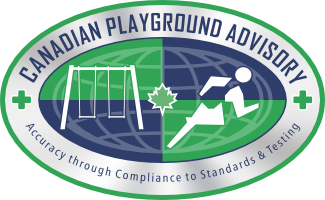Impact Attenuation Values and Prevention of Head Injuries in Children’s Playgrounds
There are more than 225,000 playground related injuries per year in the United States that result in an emergency room visit, and over 16,000 are traumatic brain injuries (TBI) and approximately 350 of those with TBI are admitted to hospital. It is suggested that TBI, especially in children is underreported by as much as 10 fold. A concussion for a child may have long-term debilitating effects and a second concussion prior to the complete recovery from the first could be life altering.
Cadaver, large animal and subhuman primate studies were initially used by the military and automotive safety engineers to provide initial impact prevention thresholds related to maximum acceleration. Initial studies resulted in the Wayne State Tolerance Curve (WSTC), leading to the Severity Index (SI) and Head Injury Criteria (HIC) during the 1960s and 1970s. These were used to establish values exceeding of 200 g’s and 1000 HICmax as being a risk to life. These values were being recommended by the Consumer Product Safety Commission and later became the impact attenuation thresholds of ASTM F1292 in the early 1990s.
During the 1990’s, developments in automotive safety continued to improve the performance measures, injury consequences and impact attenuation values for the protection of vehicular occupants from risk of injury with an abbreviated injury score (AIS) >4. In 2000 new threshold values were set by the National Highway Traffic Safety Administration (NHTSA) for HIC15 at <700 for all crash test dummies 6 years and older and HIC15 <570 for the 3 year old crash test dummy. This is a model for the threshold
of a life-threatening head injury for the relevant age group.
Cadaver, large animal and subhuman primate studies were initially used by the military and automotive safety engineers to provide initial impact prevention thresholds related to maximum acceleration. Initial studies resulted in the Wayne State Tolerance Curve (WSTC), leading to the Severity Index (SI) and Head Injury Criteria (HIC) during the 1960s and 1970s. These were used to establish values exceeding of 200 g’s and 1000 HICmax as being a risk to life. These values were being recommended by the Consumer Product Safety Commission and later became the impact attenuation thresholds of ASTM F1292 in the early 1990s.
During the 1990’s, developments in automotive safety continued to improve the performance measures, injury consequences and impact attenuation values for the protection of vehicular occupants from risk of injury with an abbreviated injury score (AIS) >4. In 2000 new threshold values were set by the National Highway Traffic Safety Administration (NHTSA) for HIC15 at <700 for all crash test dummies 6 years and older and HIC15 <570 for the 3 year old crash test dummy. This is a model for the threshold
of a life-threatening head injury for the relevant age group.



